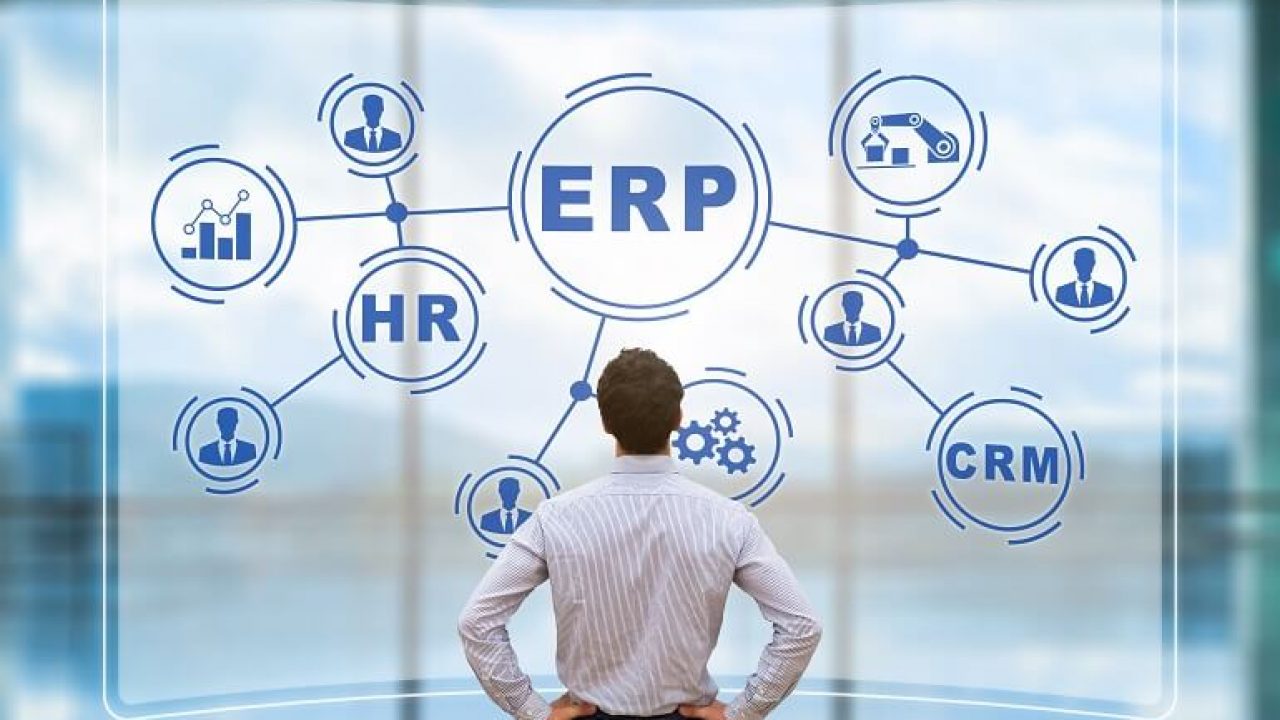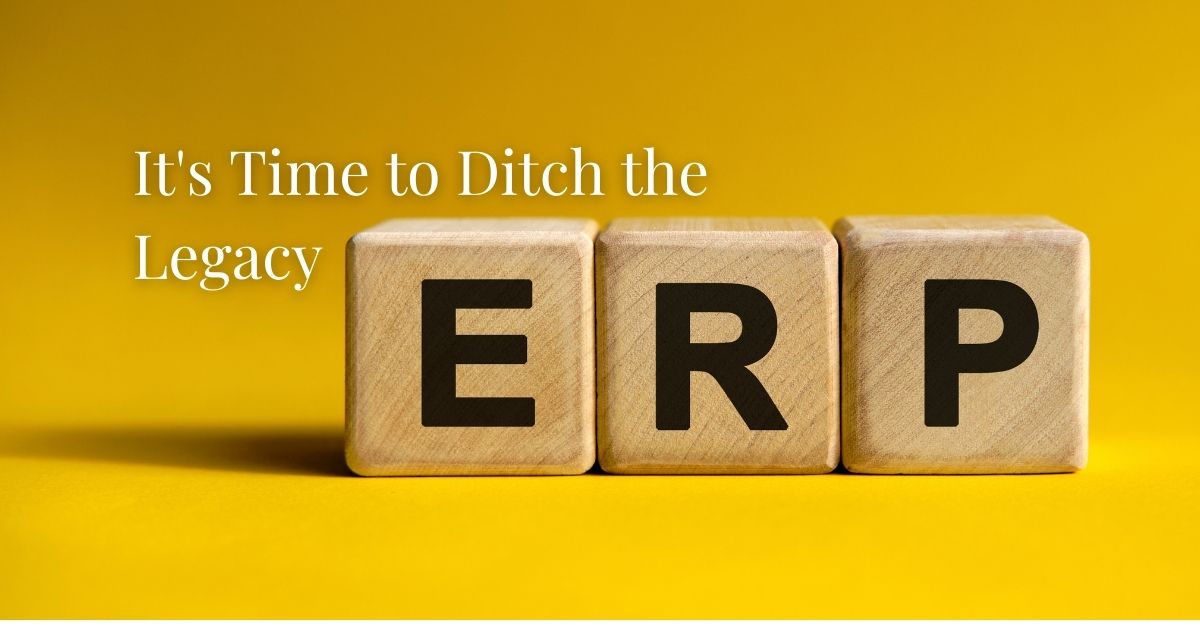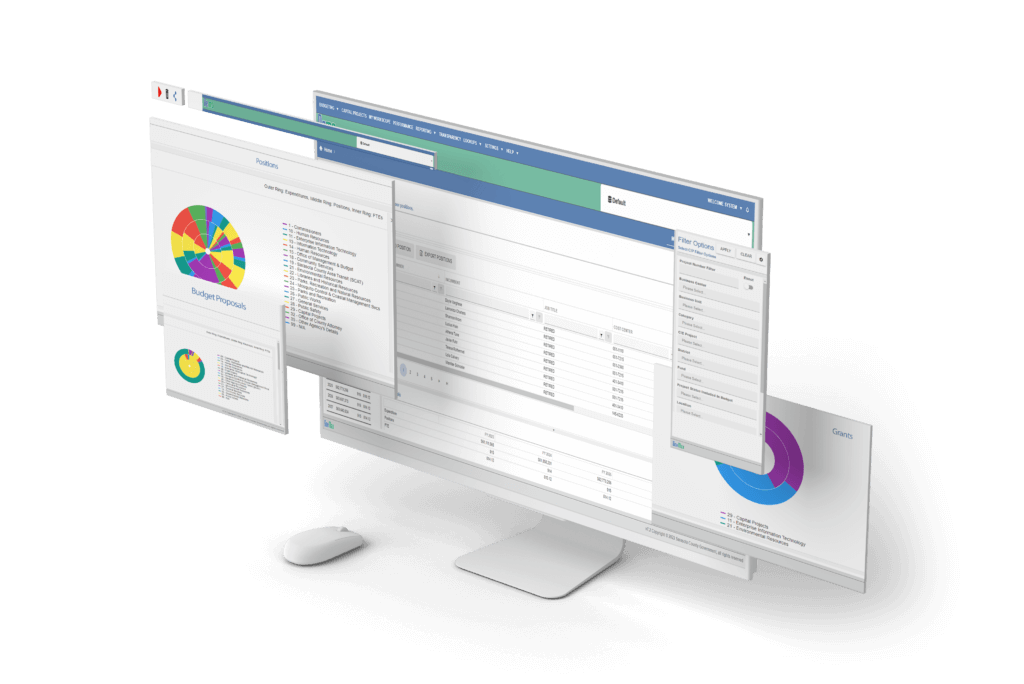ERPs for Government Budgeting: Is it Time for an Upgrade?

As the world rapidly changes and technology advances at a lightning-fast pace, government agencies are faced with the challenge of keeping up with modern demands while still relying on legacy systems. One area where this challenge is particularly acute is in government budgeting. Many government agencies still rely on Enterprise Resource Planning (ERP) systems that were implemented decades ago, which can hold back innovation and prevent government agencies from meeting the modern demands of budgeting.
To add to this, the role of government budget managers and finance directors has evolved significantly, especially in the wake of increasing scrutiny of government spending and the need for transparency and accountability. Their roles have become more complex and challenging, with a greater emphasis on result-oriented budgeting, technology, collaboration, transparency, accountability, sustainability, and flexibility. The COVID-19 pandemic has further compounded these changes, with macroeconomic conditions like inflation and higher interest rates affecting budget decisions.
To adapt to these changes, government budget teams are expected to provide strategic financial advice and support, in addition to managing budgets. They are also required to focus on results-oriented budgeting, linking budget decisions to specific outcomes, and measuring their impact. The use of technology has become increasingly important, with tools like data analytics and forecasting software helping government agencies achieve greater collaboration and transparency in their budgeting processes.
Collaboration has become a critical aspect of government budgeting, with budget managers expected to work closely with other departments, stakeholders, and the public to ensure a broad range of input and perspectives. Increased transparency has led to a greater focus on open and transparent budgeting practices, making budget information readily accessible to the public. Budget managers are also held to a higher standard of accountability, providing regular and detailed reports on the use of taxpayer dollars.
Sustainability has also become an essential consideration in government budgeting, with a focus on ensuring that budgets are sustainable over the long term and do not create future financial obligations. The Government Finance Officers Association (GFOA) provides guidance on best practices for government budgeting, financial reporting, cash management, debt management, and all other areas of financial concern. Therefore, budget managers and finance directors must stay updated on the evolving GFOA compliance and rules.
Why ERPs Have Been the Go-To Solution for Government Budgeting

To meet these evolving demands, government budget managers and finance directors require budget systems and solutions that are comprehensive, efficient, and easy to use. This is where ERPs come in. ERPs were initially designed to integrate and automate various administrative and financial functions, such as accounting, procurement, and human resources. They quickly became popular among government agencies due to their ability to streamline processes and improve efficiency.
For government budget managers and finance directors, ERPs offered several benefits. First, ERPs provide a centralized system for managing all financial and administrative functions, which can help reduce duplication of efforts and ensure consistency in reporting. Second, ERPs provide robust reporting capabilities, which can help managers monitor spending and identify trends, making it easier to adjust budgets and make informed decisions.
ERPs also help improve operational efficiency, reduce costs, and provide better data to support decision-making. ERPs can also help improve transparency and accountability, making it easier for government leaders to track spending and demonstrate results to taxpayers.
From the perspective of taxpayers, ERPs offer perhaps the most important benefit: increased accountability. ERPs provide detailed reporting on spending, which can help ensure that taxpayer dollars are being used effectively and efficiently. ERPs can also help identify areas where cost savings can be realized, allowing governments to deliver services more efficiently and at lower costs.
However, over time, ERPs have become outdated and difficult to maintain. Many government agencies are still using legacy ERP systems that were implemented decades ago, which can limit their ability to innovate and adapt to modern demands.
ERPs as Legacy Systems: Are They Holding Back Innovation in Government Budgeting?

One of the main problems with legacy ERP systems is that they are often inflexible and difficult to customize. These systems were designed to meet the needs of a specific organization at a specific point in time, and are not easily adapted to changing business processes or new technologies. This can be a major roadblock for government agencies that are trying to modernize their budgeting processes and adapt to new technologies.
Another challenge with legacy ERP systems is that they are often too complex and cumbersome and require significant investment in training and support to ensure that employees are able to use them effectively, which can be a major drain on resources. This can be a major barrier for government agencies that are trying to implement new technologies to improve their budgeting processes.
In addition to these challenges, legacy ERP systems can also be expensive to maintain and upgrade. Many government agencies are still using ERP systems that were implemented decades ago, and upgrading these systems can be an even greater challenge, as it often requires significant investment in time and resources to ensure that the new system is compatible with existing processes and technologies.
Modernizing the Government Budgeting Process: Overcoming Legacy Systems to Meet Modern Demands

Despite these challenges, there are several strategies that government agencies can use to modernize their budgeting processes and overcome the limitations of legacy ERP systems. One approach is to implement cloud-based software solutions that are designed specifically for budgeting and financial management. These solutions are often more flexible and customizable than ERP systems, but without the price tag and complex implementation processes associated with ERPs. Additionally, specialized software solutions may be more effective for certain functions, such as project management or data analysis, than a general-purpose ERP system.
Of course, for a government agency that’s been using its legacy ERP system for ages and has all of its functions deeply embedded within the system, switching away from an ERP can be harder to do. Just the sheer thought of having to go through this complex process of changing systems keeps many agencies stuck with their current ERP solution.
One approach could be to perform all of the budgeting functions in a separate cloud-based budgeting-only solution like GovMax. In fact, many GovMax customers also use an ERP across the enterprise, but have moved all of the budgeting processes out of the ERP and into GovMax to simplify, modernize and get greater efficiencies out of their budgeting processes. GovMax is much more cost effective than an ERP because it’s not profit driven (since it was developed by Sarasota County government), thereby making it feasible to both use an ERP and GovMax.
Another strategy that government agencies can use to modernize their budgeting processes is to implement best practices in budgeting and financial management. This can include adopting a zero-based budgeting approach, which requires government agencies to justify every dollar spent, rather than simply relying on historical spending patterns. It can also involve using data analytics to identify trends and make data-driven decisions about budget allocation.
Finally, government agencies can work to foster a culture of innovation and collaboration, both within their own organization and with external partners. This can involve creating cross-functional teams that bring together employees from different departments to work on budgeting and financial management initiatives. (GovMax makes it easy for department-level budget teams to input their own budget items by granting user-level access without an up-charge for additional users.) It can also involve partnering with technology providers and other external partners to identify new technologies and approaches that can improve budgeting and financial management processes.
In conclusion, modernizing government budgeting is an urgent challenge that requires government agencies to overcome the limitations of legacy ERP systems and adapt to modern demands. While legacy systems like ERPs can be difficult to replace or upgrade, government agencies can take steps to implement new technologies, adopt best practices, and foster a culture of innovation and collaboration to meet the challenges of modern budgeting. With these strategies in place, government agencies can position themselves for success in the 21st century and beyond.
8 Signs It’s Time to Ditch Your ERP System for a Cloud-Based Budgeting Solution

Government agencies are under increasing pressure to meet tight budget deadlines and budget more efficiently. However, legacy ERP systems can often hinder this process due to their cumbersome and outdated nature. Here are some signs that it may be time for a government agency to switch to a cloud-based budgeting solution:
In summary, legacy ERP systems can be laborious and cumbersome to use, making it difficult for budget managers to meet tight budget deadlines and budget more efficiently. Switching to a more modern solution can help government agencies stay competitive, streamline processes, and increase overall efficiency.
The Big Switch: 9 Things to Consider Before Transitioning from a Legacy ERP System
Switching from a legacy ERP system to a new cloud-based solution is a major undertaking for any government agency. It requires a significant investment in time, money, and resources, and requires careful planning to ensure a smooth transition. Here are some key factors to consider when making the switch:
The Dynamic Duo: Why Cloud-Based Budgeting Solutions and ERPs are Better Together
While there are certainly benefits to switching from a legacy ERP system to a cloud-based budgeting software, it’s important to note that cloud-based solutions are not necessarily a replacement for ERPs. In fact, the most effective approach to modern government budgeting may be to use both a cloud-based solution and an ERP system in conjunction with one another. Here are some reasons why:
How GovMax is Revolutionizing Government Budget

In conclusion, it’s clear that legacy ERP systems have long been considered the dominant solution for government agencies when it comes to budgeting and financial management. However, with the advent of cloud-based solutions, agencies now have more options than ever before to modernize their budgeting processes and achieve greater efficiency.
While there are certainly factors to consider when switching from a legacy ERP system to a cloud-based solution, such as ensuring data security and compatibility with other systems, the benefits of making the switch are numerous. Cloud-based solutions offer greater flexibility, ease of use, and cost savings, as well as modern budgeting practices and scalability.
That being said, it’s important to note that cloud-based solutions don’t necessarily have to replace ERPs entirely. In fact, using both a cloud-based budgeting solution and an ERP in conjunction can offer agencies the best of both worlds. With the right cloud-based solution, such as GovMax, agencies can integrate their ERP with a cloud-based platform, making the budgeting process more efficient and seamless than ever before.
GovMax is a cloud-based government budgeting SaaS developed in 2001 by veteran budget managers at Sarasota County government. GovMax frees up personnel time, streamlines the budgeting process and makes it easy to input Positions, create custom filters, prepare reports and print Budget documents with a few simple clicks. GovMax complements ERPs and other more traditional budgeting solutions and can easily import and export budget data between solutions, allowing for the seamless transfer of data and greater accuracy in financial reporting.
Best of all, it’s easy to use, secure, and is the most affordable government budgeting system on the market. Unlike other systems on the market, GovMax was developed by government to serve public agencies; not to get rich. So GovMax is kept affordable so that public agencies of all sizes can reasonably afford the solution.
By embracing modern technology solutions like GovMax, government agencies can achieve greater efficiency and meet the demands of modern budgeting practices. It’s time for government agencies to leave behind their legacy ERP systems and embrace the power of cloud-based solutions like GovMax.
To discuss your agency’s specific goals and see how GovMax fits with your requirements, email demo@govmax.org to schedule a demo.



